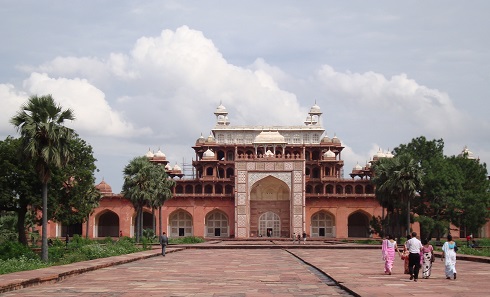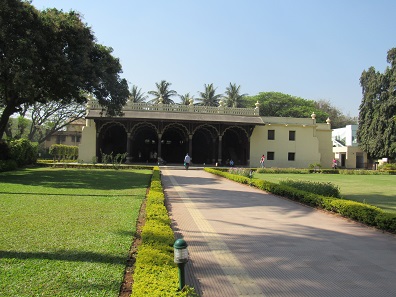by Björn Schöpe
translated by Christina Schlögl
February 15, 2018 – India is rich in monuments that show its history. With enormous buildings like the Taj Mahal and all kinds of smaller shrines and tombs, they amount to about half a million monuments. But a new law is threatening India’s historic legacy with a dark future.
A railway line was supposed to be built directly at the stepwell Rani ki vav in Gujarat, a UNESCO-World Heritage site. The current law demanded a change of plan – that kind of consideration will not be necessary in the future. Photo: Bernard Gagnon / CC BY-SA 3.0
In 1955 the Indian government already realised that it was necessary to protect historical buildings – protect them from construction projects and squatters. The Ancient Monuments and Archaeological Sites and Remains Act of 1958 with its regulations of 1959 and amendments from 2010 determined that there could be no construction within 100 metres of nationally recognised monuments. Construction was strictly forbidden in this zone. An additional area of 200 metres was declared the “regulated area”. Existing houses could stay within the zone but building conversions or new buildings had to be approved by the appropriate authorities. However this kind of privilege was only in force for an extremely low number of India’s monuments, for 3,650 registered national monuments to be exact.
The Indian government now wants to “open Pandora’s Box”, as congress member Adhir Ranjan Chowdhury has recently described it. On January 2, 2018 the first chamber of the Indian parliament, the Lok Sabha, has accepted an amendment bill to the law protecting the monuments, which experts have deemed “illogical and irrational”.
According to the new law, the newly planned highway could have been built within the buffer zone of Akbar’s tomb in Agra, too, which is the largest tomb in India in terms of surface area. Photo: Adrianne Wadewitz / CC BY-SA 3.0
After all, the new law states one crucial exception for the protection of national monuments: “Public works” are allowed to happen in the buffer zone, all the way up to the building itself. These public works have to be projects which are “construction works related to infrastructure financed and carried out by any department or offices of the central government for public purposes which is necessary for the safety or security of the public at large and emergent necessity is based on specific instance of danger to the safety or security of the public at large and there is no reasonable possibility of any other viable alternative to such construction beyond the limits of the prohibited area.”
Initially, this text does not sound too dramatic. But critics are already considering the unfortunate reality of India. Despite the total construction ban around national monuments, there are still numerous squatters occupying historical monuments. Quite often corrupt officials are supposed to approve private construction projects, which is of course illegal but common practice nevertheless. In addition, the chronic underfunding of monument preservation offices also causes the decay of numerous monuments, as a 2013 study has shown: The inspectors examined 1,655 monuments and found abuse of law on 546 monuments!
The government had planned on building a hospital complex all the way up to the Palace of Tipu Sultan. In the future this will be possible without any problems. Photo: Ibrahim Husain Meraj / CC BY-SA 4.0
The reason for the amendment bill is the government’s open goal to realise construction projects which lie in the current buffer areas: An elevated highway could not be built at Akbar’s tomb in Agra; a hospital could not be extended to the area of Tipu Sultan’s Palace in Bangalore; and a planned railway line at the stepwell Rani ki vav in Gujarat had to be modified, too. Experts however have emphasised the necessity of a protective belt around old buildings threatened by vibrations, exhaust gasses and mechanical intrusion. But this kind of consideration is supposed to end now.
The law admittedly states that the authorities in question will still have to ask permission at the National Monuments Authority (NMA), but since that is a state authority, no one thinks that the NMA will put up obstacles for the government. In any case, the government will always have the last word. Even the Archaeological Survey of India, which is also responsible for the protection of archaeological sites, approved a construction project in 2009 that was later forbidden by a Delhi court.
The Indian government is now prioritising construction works over the protection of cultural heritage and is thus risking the irreversible loss of part of its history – as historians and archaeologists continue to emphasise. A more cynical approach would be to say: The amendment bill legalises reality instead of intervening to protect historical monuments.
Indian media have repeatedly reported on the amendment bill:
Historian Nayanjot Lahiri commented on the change of law in The Hindu.
After the decision of the Lok Sabha, LiveMint and The Wire elaborately summarised the current state of things.







